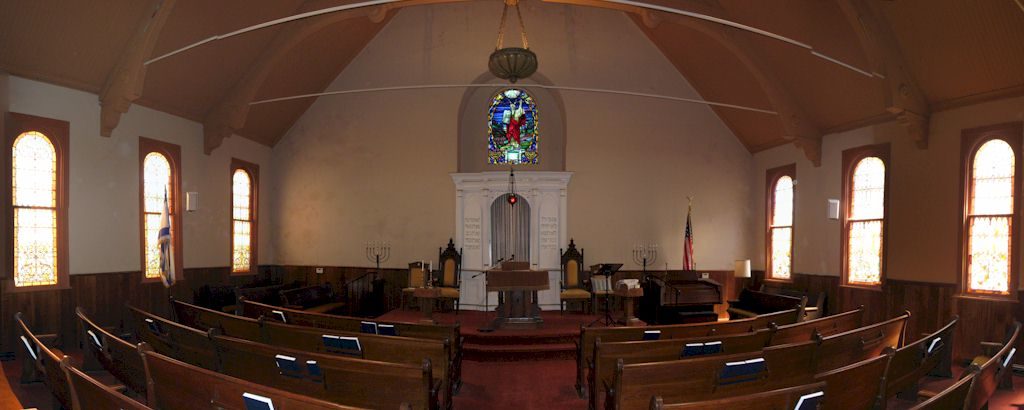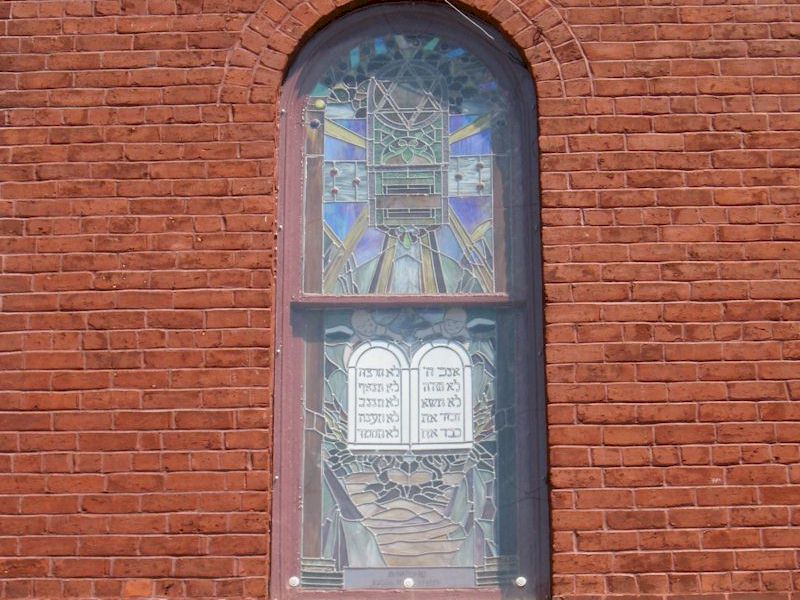Jewish newcomers to Danville encountered antisemitism as they did elsewhere. It took many forms, notably by exclusion from employment opportunities and from local civic and social organizations. The developer of the Beverstone subdivision imposed restrictive covenants which prohibited the sale of building lots and homes to “Greeks, Syrians, blacks and Hebrews.” In 1940, Rabbi Kapustin and Victor Lobl, a member of the shul, fought and were successful in having Danville’s School Board eliminate grade reductions for Jewish student who were absent from school to attend Holy Day services.
While there is no record of any major act of antisemitism in Danville, acts of vandalism occur from time to time. Several years ago, a large swastika was painted on the front door of the Temple. The outpouring of support from the Christian community in the wake of that incident was gratifying. However, that act continues to serve as a reminder that antisemitism is never far from bigotry and hate.
Throughout its history, the Jewish community in Danville has lived in harmony with its neighbors and has enjoyed excellent relation with several local churches. The construction of both synagogues was facilitated by contributions by Jews and non-Jews alike. The Temple has enjoyed special relations with many local churches including Saint Peter’s Greek Orthodox Church, the Lutheran Church of the Ascension, and the First Baptist Church. The Temple provided a home for the Lutheran congregation between 1922 and 1928, and the First Baptist Church held their services in the Temple for a year following a disastrous fire in 1905.
The Jewish community reached its peak in the 1960’s when there were approximately 245 Jews in Danville. In addition to the prominence of Jewish merchants, the community has included small business owners, optometrists, dentists, physicians, teachers and lawyers. Many were active in Danville’s civic life and continue to provide support and leadership in the civic and cultural life of our city.
The growth and decline of Danville’s economic viability and institutions has had significant impact on the strength of the Jewish community. The completion of the Richmond and Danville Railway in 1856 and the growth of the Southside tobacco market and the small tobacco manufactories the market begat brought considerable prosperity to Danville. Likewise, the founding of Riverside Cotton Mill in 1882 and the growth of many smaller textile factories stimulated the local economy, grew the population, and attracted new investment capital. Conversely, the closing of “the Mill” and the dramatic decline in the demand for tobacco together with a general decline in business activity and opportunity made Danville less attractive to newcomers including Jews.

Today, as Danville revitalizes an grows, Temple Beth Sholom (sanctuary above) remains an active and viable home for Danville’s Reform Jewish community. For several years, it has had a rabbi on a monthly or bi-monthly basis. During weeks when the rabbi is not present, lay leaders of the congregation conduct services and life cycle events. Mr. and Mrs. Peter Howard, in particular, have been instrumental in maintaining the viability of the congregation. JoAnn Howard, who is a para rabbinic, has provided inspired leadership for the Temple community, and continues to serve as its President.
This story courtesy of Sam Kushner drawing from the archives of the Temple and the Encyclopedia of Southern Jewish Communities. See also Jewish Origins in Danville.

The window pictured above was handmade by my father, Albert Koplen; completing it took more than three years.
About midway through its construction, the contractor who was razing the orthodox synagogue building, came to the store
with a gift for my Dad. The gift was part of one of the stained glass windows that had been destroyed. The piece was the entire ten commandments from a synagogue window. Immediately Dad re-drew his window to incorporate that remnant of the
orthodox synagogue. It was especially important to my father because, just as my Dad had been the President of Temple Beth Sholom for many years, Dad’s father, my grandfather, Abe, had been president of the orthodox synagogue…